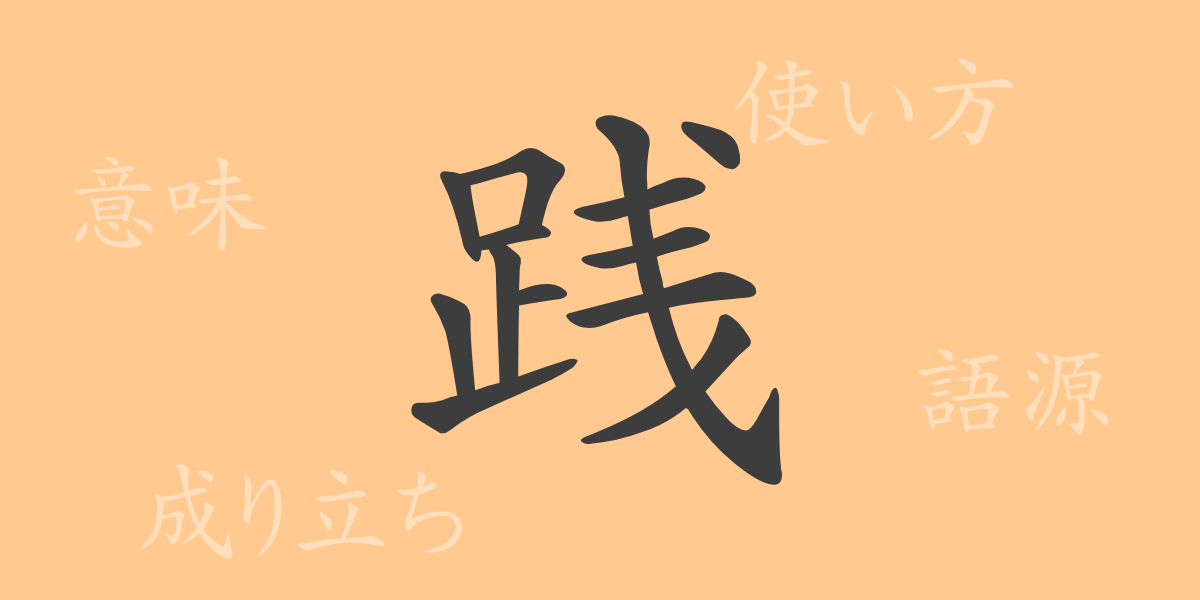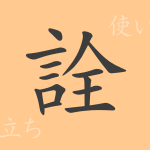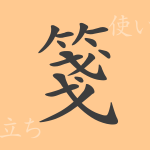In Japanese writing and conversation, commonly used kanji possess profound meanings and histories. Among these, “践” (せん) symbolizes important concepts related to action and practice, and is frequently employed in daily life and business settings. This article delves into the origins, uses, and phrases associated with “践”, exploring the full scope of this kanji’s charm.
Origins of 践
The kanji “践” originates from ancient China, initially representing the act of stepping on something, derived from the combination of the radicals for “foot” (足) and the phonetic component “戔”. Initially used to depict the act of stepping, it has evolved to encompass broader meanings such as implementation and practice, reflecting its historical use in contexts of action and mobility.
Meaning and Usage of 践
“践” primarily means “to practice” or “to carry out.” It refers to translating plans or promises into concrete actions or applying principles and theories in real-life situations. It also retains its original meanings related to walking and stepping. Commonly, it is used in terms such as “practice” (実践) and “fulfillment” (履行).
Readings, Stroke Count, and Radical of 践
“践” is well-acquainted among the Japanese public, taught in schools and used in everyday life.
- Readings: On’yomi (Sino-Japanese reading) is “セン”, Kun’yomi (native Japanese reading) is “ふむ”.
- Stroke Count: “践” comprises 13 strokes.
- Radical: The radical is “foot” (足部).
Phrases, Idioms, and Proverbs Using 践
Several idioms and proverbs incorporate “践”, reflecting its foundational meanings of action and movement:
- 実践 (じっせん): Putting theories or plans into action.
- 踏襲 (とうしゅう): Following in the footsteps of predecessors, inheriting methods or systems.
- 履行 (りこう): Fulfilling obligations or agreements thoroughly.
- 践行 (せんこう): Enacting ideals or policies in real actions.
- 踏破 (とうは): Walking through or completing a route or path.
These expressions showcase how “践” reflects the fundamental ideas of “action” and “movement” within the Japanese language.
Conclusion on 践
The kanji “践”, formed from the elements representing “foot” and “sound”, has been used since ancient times to denote stepping or implementing actions. In Japanese, it frequently appears in contexts involving the transformation of plans or theories into practical actions. Through various idioms and phrases, we learn the rich connotations of “践”, a kanji emblematic of our resolve to turn intentions and plans into tangible actions.

























